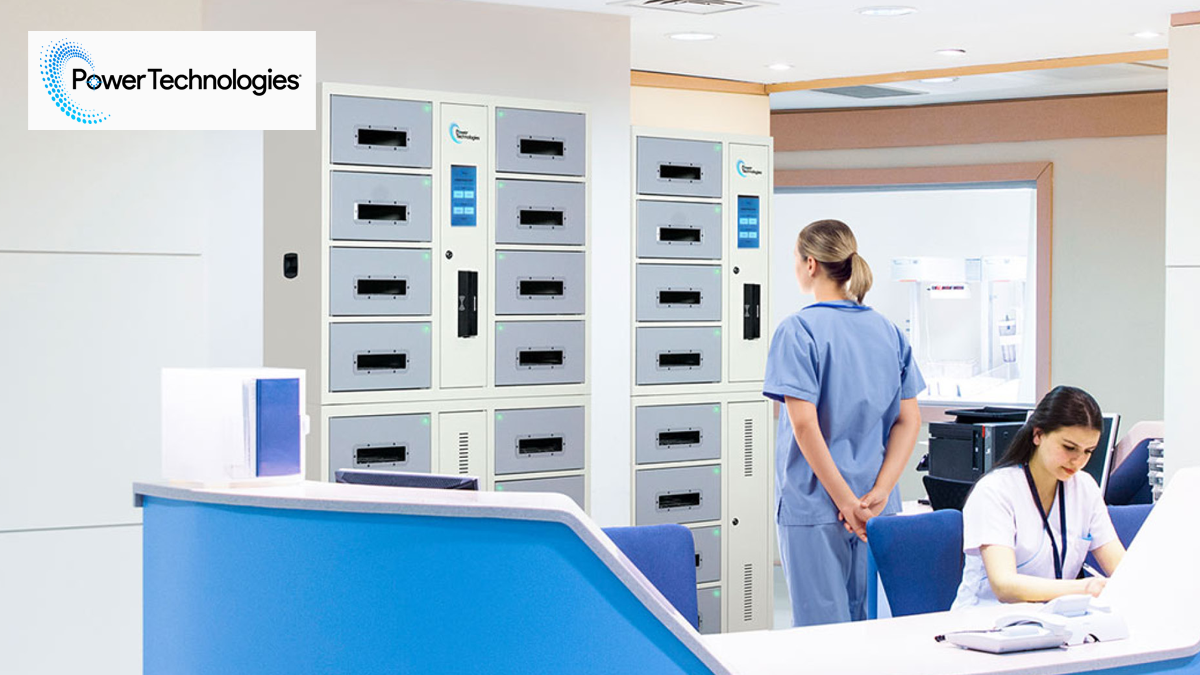With the growth in hybrid working and shared devices, there are increasing numbers of laptops in offices, and how these are charged is an important topic – and charging cabinets are becoming an increasingly popular option.
Shared devices are becoming more common in offices as hybrid working grows, which means they need to be managed correctly – especially ensuring they are charged. This is fuelling the growth in charging cabinets.
“In today’s increasingly mobile world, it is crucial for organisational success to implement strategies to simplify shared device management and extend device lifecycles,” says David Burns, CEO of Power Technologies, which manufactures a range of laptop charging devices, including charging cabinets.
Luke Neave, international channel manager, Power Technologies, says there are various advantages of using charging cabinets for laptops over other individual charging solutions. “Simply put, they offer superior efficiency and control, which is especially crucial for asset management and security,” he says.
“Power Technologies charging cabinets deliver unmatched efficiency and scalability compared to ad-hoc solutions, offering key advantages like organised cable management, centralised device management, fast simultaneous charging, space optimisation, robust theft prevention, and optimised battery life all contributing to a more secure, efficient and sustainable device ecosystem.”
Charging cabinets can have either a single door or individual compartment doors. Charging cabinets can also be fitted with a single door that covers all the compartments, which is more beneficial for communal access to all the compartments when unlocked.
Charging cabinets don’t need to be installed, as portable options are available that can be placed and plugged in for immediate use.
As well as laptop charging cabinets, there are tablet charging trolleys, which are popular in educational settings, as many use tablet devices in everyday learning today – and charging all the devices is crucial to ensure that entire classes have access to them. As with cabinets, they provide multiple charging points as well as added security.
Increasing popularity
The popularity of charging cabinet solutions is growing, according to Luke. “From schools, logistics and manufacturing, healthcare, retail, hospitality, and corporate spaces, the need for secure, efficient charging is booming,” he says.
“By implementing secure charging, organisations can potentially reduce annual device-related IT troubleshooting costs – currently £300-£600 per device, according to Gartner – by 60%, as evidenced by field data from clients using mobile devices. Power Technologies provides tailored solutions for diverse sectors with solutions that reduce downtime, shrinkage and increase productivity.”
Security boost
Another advantage of using charging cabinets is the increased security. For years, laptops, tablets and other such devices have proved tempting to thieves, especially if they are left in an office, school or such like overnight. But charging cabinets can increase device security.
“Security is vital when purchasing charging solutions,” says Luke. “We offer carts and cabinets with robust physical protection, including locks and durable materials. Our lockers, in addition to this physical security, provide advanced digital options like PIN codes and RFID.
“Features like secure cable storage and wall/desk mounting prevent theft and damage, ensuring device safety across both product lines.”
Reseller conversations
When talking to customers about charging cabinets, there are various facets that resellers should be highlighting, Luke says.
“When discussing charging cabinets with clients, resellers should focus on the tangible return on investment they deliver; reduced device loss and increased operational productivity, especially in shared device environments,” he says.
“Also emphasise the strong asset management capabilities, organised cable management and secure adapter storage. Highlight customisation options, including branding and varied charging port configurations. And of course, the sustainability of preventing overcharging, which prevents PC battery degradation and unnecessary electricity costs.”
Indeed, one common concern that potential customers often mention is the threat of overcharging, which can diminish the life of a battery over time. However, these fears are unfounded, according to Luke. “Our charging cabinets prevent overcharging with cycle timing or Inteli-sense, distributing power to avoid overloading the wall circuit when charging multiple devices,” he says.
“Cycle timing rotates power between zones, while Inteli-sense prioritises zones needing a charge. Overload protection is built-in, but individual device power regulation is still essential to prevent internal overcharging.”
Future
Luke is confident that demand for charging cabinets will continue to grow, especially with design innovations in the pipeline. “Charging cabinets are poised for continued growth, driven by hybrid work and shared device trends,” he says.
“Future innovations will focus on enhanced asset management, sustainability and integration. Expect to see centralised dashboards that provide organisation-wide oversight, smart USB-C ports delivering key device information, and seamless integration with existing organisational software.
“Finally, multi-device hubs, supporting diverse equipment like laptops, tablets, VR headsets, and drones within a single unit, streamline operations and enhance overall efficiency, ensuring our flexible solutions continue to adapt to evolving workplace needs.”
With demand set to increase for laptop charging cabinets, this is an area that resellers should look to get involved with, as it could be a useful addition to their portfolio and provide a good upsell alongside laptops and related devices.
